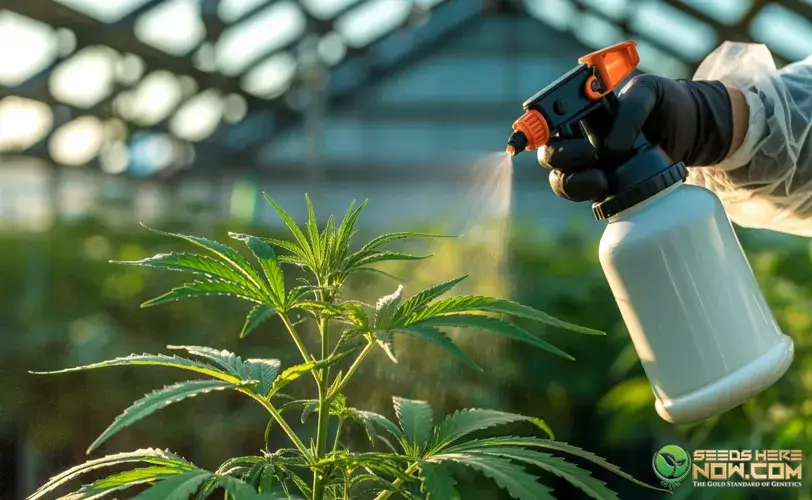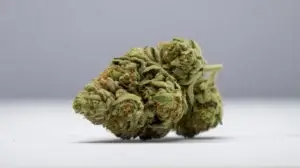Understanding How To Make Feminized Seeds

Have you ever wondered how feminized seeds are made? How does that result in such high-quality feminized marijuana seeds? For those interested in the horticultural science behind producing feminized cannabis seeds, this article provides an in-depth look at the feminization process. To create an all-female crop capable of delivering superior yields, growers place a premium value on feminized cannabis genetics. But what sets these prized seeds apart from their regular counterparts? Let’s go over the exciting journey from plant selection to seed development.
Key Takeaways
- Feminized seeds are produced by breeding two female cannabis plants to ensure all offspring are female.
- Growers prefer feminized seeds to avoid male plants, which produce less resin and THC, resulting in a lower yield.
- Feminizing seeds can be achieved through environmental stressors or chemical treatments to induce the formation of male buds in female plants.
- Properly stored, feminized seeds can retain their viability for years.
- Understanding the process behind producing feminized cannabis seeds can enhance the success of cannabis cultivation.
The Basics of Feminized Seed Development
The core framework of feminized seed production methods revolves around understanding the different roles played by male and female cannabis plants. It’s a fascinating journey into feminized seed genetics that delves into the structural and functional differences of these plants. As nature intended, the male plants produce pollen with the primary role of pollination. At the same time, their female counterparts deliver buds rich in THC, the recreational and medicinal ingredient in cannabis.
One of the game-changing strategies in modern cannabis farming is the development of feminized seeds. These seeds are explicitly bred to eliminate the involvement of male chromosomes, thereby promising an all-female plant yield. The high-quality buds derived from female plants make feminized seeds a boon for growers. Since only female plants generate these buds, promoting feminized seed reproduction ensures a harvest abundant in potency and volume.
A deeper look into feminized seed development reveals genetic manipulation as the primary torchbearer for this revolution. This strategy, known as “feminization”, triggers the female plant’s sexuality to produce seeds. As a result, naturally male chromosomes are nudged out of the equation, leading to feminized seeds. This translates to a crop with a high success rate, efficient space utilization, and consistent quality for growers. Understanding the advantages and potential challenges of this process is the cornerstone of successful feminized seed production.
- Male plants generate pollen for seeding, while female plants yield buds with THC.
- Feminized seeds aim to eliminate male chromosomes and focus solely on female plants to produce high-quality buds.
- Feminization is a process that alters female plant genetics to produce female seeds, ensuring a crop with a high success rate, optimal space utilization, and consistent quality.
From a broader perspective, the development of feminized seeds addresses the challenges posed by traditional seed production and advocates for an efficient and prolific harvest driven by genetic advancements in seed production.
Inducing Feminization: Stress vs. Chemical Methods
Exploring the inner workings of the cannabis plant begins a fascinating journey through genetics, reproductive biology, and innovative feminized seed breeding techniques. Feminization, as the name suggests, is the process through which we can ‘con’ a female cannabis plant to produce pollen by creatively manipulating its environmental conditions or hormonal system. Understanding the pros and cons of these methods marks a crucial step in the feminized seed production process.
The Role of Environmental Stressors
Rhodelization is a natural feminization technique that falls under the banner of these stress-induced methods. The plant is almost tricked into believing it is nearing the end of its life, triggering a survival instinct that causes it to produce male pollen sacs in a last-resort attempt to reproduce and ensure the continuation of its species. While this method taps into the inherent intelligence of nature, it tends to yield less pollen, making it less favored among commercial growers.
Chemically Altering Plant Hormones
In contrast, chemical methods present a more predictable and reliable approach to inducing feminization in cannabis breeding. These involve the application of substances, such as colloidal silver or gibberellic acid, designed to artificially induce stress within the plant and coax it into producing pollen. By simulating adverse conditions through biochemical means, breeders can convince female plants to produce pollen in a more controlled and effective manner.
Breeders frequently find themselves favoring chemical methods due to the sturdy reliability they offer as well as their capacity to deliver larger quantities of pollen, essential for large-scale, commercial operations.
Whether employing naturally induced stress or chemically altering plant hormones, it’s essential to understand these various methods of feminizing marijuana plants. They enable breeders to produce high-quality, feminized seeds that promise a future crop consisting exclusively of robust, resinous, and potent female plants. Thus, incorporating these processes into the grower’s toolkit would drastically enhance the success and productivity of their cultivation.
Natural vs. Scientific: Understanding Different Feminization Techniques
When it comes to feminized seed development, growers often choose between two distinct approaches: natural and scientific. Both avenues employ various techniques for feminizing seeds, each with its advantages and challenges.
Starting with natural feminization, the Rhodelization method is a common technique used. It leverages a plant’s survival instinct, causing it to produce male pollen sacs in response to extreme stress.
- Advantages: No need for external agents or substances, no extra cost.
- Challenges: Less reliability and less control over the process may result in lower yield.
The scientific methods involve predetermined chemical treatments with substances such as colloidal silver, silver thiosulfate, or gibberellic acid. The goal is to promote male characteristics in female plants, resulting in more reliable methods for producing feminized seeds.
- Advantages: Controlled process, higher reliability, potentially better yield.
- Challenges: It requires the acquisition of specific chemicals, incurs additional costs, and may be more complex.
As growers refine their skills and expertise in cannabis cultivation, the choice of feminization technique often boils down to aligning with their resources, projected outcomes, and adeptness in either natural or scientific methods for seed feminization.
How Do Breeders Make Feminized Seeds?
The production of feminized seeds involves a meticulous approach that yields cannabis crops with feminized seeds. Among the prominent techniques to produce feminized seeds are the Rhodelization method, chemical inducers such as colloidal silver and silver thiosulfate, and the application of Gibberellic Acid (GA3). Let’s delve into these steps to create feminized seeds and explore how each method works.
The Rhodelization Method Explained
Rhodelization is a natural method of producing feminized seeds. It is based on stress-induced conditions in which a female cannabis plant starts producing pollen to ensure the continuation of its lineage. However, its unpredictability and lower yields make it less preferred among growers compared to chemical methods.
Chemical Inducers: Colloidal Silver & Silver Thiosulfate
Colloidal silver and silver thiosulfate provide breeders with greater predictability and control in feminizing cannabis seeds. By spraying these chemicals on the flowering sites of female plants, growers can induce the female plants to develop pollen sacs and produce pollen, a characteristic typically found in male plants. This technique is a common and effective way to feminize cannabis seeds.
Gibberellic Acid (GA3) and Its Effects
Gibberellic Acid (GA3) is another tool in a breeder’s arsenal for producing feminized seeds. GA3 influences the plant by altering its hormonal balances, prompting it to develop male features and produce pollen. While GA3 ensures feminization, breeders often choose this method based on the availability of resources, personal preferences, and the desired level of control during the feminization process.
| Method | Description |
|---|---|
| Rhodelization | A stress-based biological approach is used to trigger the development of male characteristics in female cannabis plants. |
| Colloidal Silver & Silver Thiosulfate | Chemical agents are sprayed on female plants to induce the development of male pollen sacs, thus allowing self-pollination. |
| Gibberellic Acid (GA3) | A plant hormone that triggers the development of male traits in female plants when applied, leading to pollination. |
The decision on which method to employ to feminize cannabis seeds depends mainly on the growers. Each of these methods offers its unique benefits and setbacks. Whichever way breeders choose to feminize cannabis seeds, the ultimate objective is to achieve a high-yielding crop of female-only plants. Additionally, careful planning and a thorough understanding of each method are essential for successful feminized seed production.
Exploring the Use of Colloidal Silver in Feminized Seed Production
Favored among breeders and hobbyists alike is a widely lauded method for feminized seed production: the use of colloidal silver. This substance stands out due to its simplicity, accessibility, and reliability, as it produces feminized seeds from regular seeds more completely and efficiently. The science behind the colloidal silver technique is simply fascinating.
The colloidal silver method shows that a solution containing nanoparticles of silver is sprayed onto female cannabis plants. This notably impacts the plant’s floral flowering process, where ethylene, a hormone essential to female bud formation, is noticeably limited. Consequently, this paves the the development of pollen sacs typically reserved for male plants, thus heralding a new direction in feminized seed production. Let’s go a bit deeper into the specifics of the colloidal silver process. To give you a detailed understanding, here’s an analysis of essential factors like appropriate concentration levels, application regularity, and targeting areas in a concise table:
| Colloidal Silver Factor | Key Detail |
|---|---|
| Concentration Levels | An optimal concentration of 30-and 50 ppm (parts per million) is recommended. |
| Regularity of Application | Spraying should begin as soon as the plant starts flowering and continue daily for at least a fortnight. |
| Targeted Areas for Spraying | The plan’s sites should be the focus; that’s where the magic happens. |
| Completion Time | Approximately 10-14 days after initial spray application. |
| Expected Outcome | Formation of male pollen sacs on a feminized plant. |
While it is a revolutionary tool for producing feminized seeds, two primary factors should be underscored. First, the intricacies of the colloidal silver method emphasize the need for meticulous adherence to achieve the anticipated outcomes. Second, it’s essential to remember that colloidal silver-treated plants are recommended exclusively for seed production; the silver particles make them unsafe for consumption.
Producing feminized seeds from regular seeds using colloidal silver requires meticulous consideration, but the end result yields more uniform and dependable seed batches. This revolutionizes feminized seed production methods and brings absolute quality control within the breeder’s sphere.
“Precision, control, and uniformity – that’s why breeders around the globe turn to the colloidal silver method.”
Step-By-Step Guide To Creating Feminized Cannabis Seeds
Cannabis breeders and hobby growers alike understand the importance of feminizing cannabis seeds. Feminized cannabis seeds guarantee that the resulting plant will be female, leading to high-quality buds and reliable yields. In this section, we provide a detailed, step-by-step guide to feminized seed cultivation techniques, carefully selected by experienced breeders. We delve into each stage of the feminized seed production process, including selection, treatment, pollination, and best practices for harvesting and storage.
Choosing Suitable Female Plants
Identifying and selecting suitable female plants is the first crucial step in producing feminized seeds. Robust and healthy female cannabis plants displaying desirable traits such as rapid growth, disease resistance, and high cannabinoid content are often chosen.
Processing and Application of Chemical Treatments
Moving on, growers use various chemical treatments to induce male characteristics in female plants. Colloidal silver is one popular substance used in this crucial step. Spraying sprays onto the bud sites of female plants transforms these buds into male-typical pollen producers.
Timing and Techniques for Pollination
Another critical aspect of feminized seed cultivation techniques is the timing and methods for pollination. Pollination must occur when the female plants have entered their peak flowering phase. This timed coordination guarantees optimal seed production and paves the way for successful feminization.
Harvesting and Storing Feminized Seeds
The process culminates with the harvesting of the feminized seeds. Harvesting ensues when the seeds change from green to brown, indicating their maturity. Afterwards, carefully storing these seeds in a cool, dry space can keep them viable for many years, ready to kickstart the next round of feminized seed cultivation when needed.
The Science of Female Seed Development
The intricacies of female seed development require a thorough understanding of genetics and botany. The primary goal is to cultivate feminized seeds, which have been bred to contain only female genetics.
The science behind feminized seeds: This impressive feat stems from carefully manipulating environmental factors coupled with the targeted application of precise chemical treatments. This methodical approach enables the creation of seeds devoid of male chromosomes.
“Understanding the underlying genetics of the cannabis plant and its biology is a crucial element in producing seeds that consistently result in high-cannabinoid producing female plants.”
Understanding feminized seed reproduction is key to mastering the process. Here is a simplified overview of the steps:
- Identifying and selecting the strongest and healthiest female plants with desirable traits.
- Applying specific stress or chemical treatment to make the female plants produce pollen (typically a feature of male cannabis plants).
- Collecting and using that pollen to fertilize other female plants.
- The fertilized female plant will ultimately produce seeds that carry only female genetics.
With every stage of this process, the science of feminized seed genetics is at play, dictating the outcome and ensuring the propagation of female-only seeds. This, in turn, ensures high-yield, high-quality cannabis harvests.
Feminized Seed Cultivation Techniques
Cultivating feminized seeds has become an art in its own right, encompassing a broad spectrum of techniques and understanding to master. From manipulating the growing environment to monitoring plant characteristics and ensuring appropriate isolation during pollination, each aspect plays a crucial role in the feminization process for cannabis seeds.
Optimizing Your Growth Environment for Feminization
Creating feminized seeds begins with creating the ideal growth environment. Temperature, humidity, and light cycles are significant factors that require careful adjustment. Even slight deviations can significantly impact the results, underscoring the importance of precise control and a thorough understanding of these parameters.
Temperature significantly influences plant behavior. During the growing period, a consistent temperature of around 70°F to 85°F works best. Seedlings prefer high humidity levels between 70-80%, which are gradually reduced to 40-50% during the flowering stage. Cannabis plants need plenty of light for optimum growth—a light cycle of 18 hours on and 6 hours off is recommended during the vegetative phase.
Remember, Consistency is the key to successful feminization. Monitoring these factors and maintaining them at optimal levels can significantly ease the feminization process.
Monitoring for Male Characteristics
Another critical aspect of successfully creating feminized seeds involves keen supervision for male characteristics. Any signs of pollen sacs or bananas (nanners) should be removed promptly, as their presence would result in pollination, yielding regular seeds instead of feminized ones. A scrupulous examination of plants, especially during the pre-flowering and flowering stages, helps ensure the purity of feminized seeds.
The Importance of Isolation During Pollination
Finally, isolation plays a pivotal role during the pollination process. By ensuring that only the intended female plants are fertilized, you prevent the unintentional spread of pollen, thereby safeguarding the purity of the feminized seeds. This technique allows for a more controlled and productive feminization process.
Mastering the techniques to produce feminized seeds requires a blend of artistry, science, and attention to detail. But with practice and persistence, it can open up a whole new world of potential in cannabis cultivation.
From Male to Female: The Feminization Process for Cannabis Seeds
The fascinating journey of the feminized seeds production process leads us through a remarkable transformation. In essence, the process involves converting genetically female plants to produce pollen, a feature predominantly associated with male plants.
This process is accomplished through a comprehensive and scientific approach that includes precise control of various factors and the application of specific stressors or chemical agents to carefully selected female plants. The sophistication of these methods for producing feminized seeds ensures that the resulting seeds become feminized, allowing for the growth of only female plants.
This methodology ensures that resulting seeds are feminized, facilitating a more predictable and female-only crop.
We dive into the science behind feminized seed, a testament to the mind-boggling complexities of nature and human ingenuity. Here’s a brief overview of the significant steps that the process involves:
- Selection of Female Cannabis Plants: It is critical to select healthy and robust female plants. These plants should exhibit desirable characteristics such as disease resistance, high yield, and high THC content.
- Application of Stressors or Chemical Agents: High stress or the application of chemical agents, such as colloidal silver or Silver Thiosulphate Solution (STS), forces female plants to produce male pollen sacs.
- Harvesting of Pollen and Fertilization: The pollen from these pollen sacs is then harvested and used to fertilize other female plants.
- Harvesting of Feminized Seeds: The fertilized female plants then produce feminized seeds. These seeds yield only female plants when grown.
Next, we’ll explore this process further by comparing the two primary methods commonly employed to produce feminized seeds.
| Method | Process |
|---|---|
| Stress-Induced Feminization | The process introduces high-stress levels to the female cannabis plants. The stress prompts the female plants to enter survival mode, causing them to produce male pollen sacs. |
| Chemical-Induced Feminization | Involves the application of chemical agents like colloidal silver or STS. These chemicals block the production of ethylene, a female hormone, thereby inducing male characteristics and pollen production. |
The choice between the two largely depends on the cultivator’s preference, resources, and the level of control they desire over the process. Regardless of the choice, the feminized seeds production process is an intriguing facet of cannabis cultivation that enables growers to rest assured knowing they are cultivating potent and fruitful female plants.
Common Challenges in Producing Feminized Cannabis Seeds
While rewarding, it creates a host of challenges. Breeders implementing feminized seed breeding techniques regularly encounter various hurdles that must be addressed effectively to ensure the production of high-quality feminized seeds. Herein, we discuss the significant difficulties, including preventing hermaphroditism, assuring high pollen viability, and managing seed maturity and germination rates. Observing these aspects closely will facilitate the successful utilization of feminized seed breeding techniques.
Preventing Hermaphroditism
One crucial challenge in producing feminized seeds is the inadvertent development of hermaphroditic plants. These plants display both male and female traits and can jeopardize the success of the feminization process. Avoiding hermaphroditism requires maintaining a stable growing environment free from unwarranted stressors, thereby reducing the likelihood of self-pollination and ensuring survival.
Ensuring High Pollen Viability
A vital aspect of successful seed feminization is producing and applying viable pollen. A common issue with chemically induced pollen is its reduced viability over time, which directly impacts the effectiveness of fertilization. Therefore, procuring, storing, and applying the pollen while it is still viable is crucial to the success of creating feminized seeds.
Managing Seed Maturity and Germination Rates
Importantly, breeders must also manage the maturity and germination rates of the seeds produced. Harvesting seeds at the right time, when they have turned from green to brown, is key to ensuring they have reached full maturity and can germinate effectively. Proper storage conditions—cool and dry—are crucial to maintaining seed viability for years.
Observing these challenges and implementing adequate measures to overcome them aids breeders in making the most of feminized seed breeding techniques.
Techniques for Feminizing Seeds from Established Breeders
In the world of cannabis cultivation, treating feminized seeds is a high-priority task for many established breeders. They employ a range of specific techniques to transform regular cannabis seeds into feminized seeds. This effort ensures that he vast amount of harvested cannabis is female, the sex of the plant that produces the desired potent buds.
Practically, the key techniques for making feminized seeds are quite varied. The method depends heavily on the breeder’s experience, expertise, and resources. Some breeders may opt for natural stress-based methods over chemical-based ones, or vice versa.
Among the most popular techniques are the use of colloidal silver or silver thiosulfate on the bud sites to interrupt the plant’s ethylene production. This disruption ultimately encourages the creation of male characteristics in female plants, inducing them to produce pollen. This pollen is then used to fertilize other female plants, resulting in the production of feminized seeds.
| Method | Process | Outcome |
|---|---|---|
| Colloidal Silver Technique | Apply colloidal silver onto bud sites of a mature female plant | Produces male pollen sacs, which can be used to pollinate other female plants |
| Silver Thiosulfate Technique | Apply silver thiosulfate solution on the bud sites of a mature female plant. | Encourages the formation of male pollen sacs, which are used to fertilize other female plants |
| Extended Flowering | Let the mature female plant push beyond the recommended flowering stage | Stresses the plant to produce pollen as a survival mechanism |
Remember, these steps aim to produce feminized seeds, fostering an environment where most plants produce the desirable female flowers. However, the chosen method to achieve feminized seed production should be carefully considered, weighing both the advantages and potential challenges associated with each technique.
Tips for Making Feminized Seeds at Home
Making feminized cannabis seeds at home can be a rewarding process for both novice and experienced growers. From mastering DIY colloidal silver production to maintaining optimal environmental conditions for feminization, the journey to creating your feminized seeds is laced with learning opportunities and experiences. Moreover, implementing best practices for fertilization is indispensable for a successful yield. Here are some relevant tips to guide you on this journey.
DIY Colloidal Silver Production
You may conveniently purchase colloidal silver from the store, but creating it at home can be a cost-effective alternative. The process involves suspending silver particles in distilled water using an electric current. Detailed guides explaining the step-by-step procedure are available online for easy reference and guidance.
Environmental Controls for Successful Feminization
Creating a conducive environment for feminized seed production is key. By closely monitoring and adjusting environmental parameters such as temperature and humidity, you set the stage for successful feminization. Remember, feminized seeds require unique care; therefore, keeping the growing environment clean and controlled is essential.
Fertilization Best Practices
Fertilization practices make a significant difference to your yield outcome. To ensure the pollen you’ve produced lands on the future seed-hosting flowers, fertilization should ideally be performed late in the dark or right at lights-on. Furthermore, brush or shake the chosen pollinating branch onto a lower branch of a female to optimize the process. Appropriate timing comes under fertilization best practices – pollination must be done when the females are 2-3 weeks into their flowering phase.
Implementing these tips for making feminized seeds will prepare you to elevate your game in cannabis cultivation and join the ranks of expert growers who achieve extraordinary success in this field.
Trends and Innovations in Feminized Seed Production Methods
The fascinating world of feminized seed development and the feminization process for cannabis seeds continues to evolve. Driven by an unending quest for efficiency and improved quality, breeders and growers continually discover new methods for producing feminized seeds.
One trending method involves utilizing tissue culture techniques, which provide a more controlled environment, ideal for managing the intricate feminization process. Another approach that has been capturing attention in the industry is the exploration of genetic modifications to ensure female-only seed production.
Adopting these advanced techniques reflects breeders’ desire to capitalize on the benefits of feminized cannabis seeds.
An increasing number of growers have recognized the value of cultivating feminized cannabis seeds. It considerably enhances the predictability of the crop, offering consistent quality and a more efficient use of space.
This explains why innovations in feminized seed development continue to emerge. These innovative methodologies represent the industry’s commitment to breeding better, high-cannabinoid-producing female plants.
| Trends | Impact on feminized seed development |
|---|---|
| Tissue Culture | Allows for precise control over the development and feminization of seeds. |
| Genetic Modification | Potentially ensures the production of exclusively female seeds. |
These recent trends signal exciting possibilities for the future. As breeders and growers continue to unravel the process of feminizing cannabis seeds, our understanding and capability to manipulate marijuana genetics for optimum feminization will undoubtedly mature and refine.
Conclusion
As we unravel the complexities of the feminization process, it’s clear that the transformation of the cannabis industry is well underway. The proven potential of feminized marijuana seeds has opened a new frontier for growers, promising consistent, high-quality produce. Embracing feminized seed breeding techniques is not just trend-following; it’s about leveraging the best practices in cannabis cultivation.
The Future of Feminized Cannabis Seeds
Known for their high yields and reliability, feminized seeds are paving the way to the future of cannabis cultivation. Breakthroughs in the development and application of feminization techniques are positioning feminized marijuana seeds at the forefront of the industry. These innovations address the challenges faced by breeders and growers, enhancing the quality, stability, and diversity of cannabis in the market. Countless opportunities lie ahead as our capabilities to produce more efficient and natural feminized seeds continue to grow.
Expanding Your Knowledge and Cannabis Cultivation Skills
Mastery in feminized seed production isn’t achieved overnight. It requires learning, practice, experimentation, and patience. As you delve deeper into the craft, you’ll find the journey challenging and rewarding. Whether you’re a novice breeder or an experienced botanical enthusiast, expanding your knowledge and refining your cultivation skills is both fulfilling and rewarding. Remember, consistency, curiosity, and a genuine passion for the sacred herb are the key to success in this field. The era of feminized cannabis seeds is here, and we are just scratching the surface.
FAQs
What is the feminized seed production process?
The feminized seed production process typically involves selecting female cannabis plants, spraying the chosen chemical substance onto the plants, and collecting and drying the pollen. This pollen is then used to fertilize other female plants, producing seeds that are, in theory, female.
How are feminized marijuana seeds made?
Feminized marijuana seeds are created by breeding two female cannabis plants. This is achieved by stressing a female plant or applying a chemical treatment to induce male bud formations. This pollen is then used to fertilize another female plant, creating female-only seeds.
What are the feminized seed production methods?
Feminized seed production can either be achieved naturally through environmental stressors or chemically by using colloidal silver (CS), silver thiosulfate (ST), gibberellic acid (GA3), or ethylene.
How does feminized seed reproduction work?
Feminized seed reproduction works by getting a female cannabis plant to produce pollen for fertilization. Most commonly, this is induced through stress or chemical treatment. The pollen can then fertilize another female plant, ensuring the seeds produced are female.
What is the feminization process in cannabis breeding?
The feminization process in cannabis breeding involves inducing a female plant to produce male pollen sacs. This pollen is then used to fertilize other female plants, resulting in seeds that are female-only. This can be achieved naturally (by stressing the plant) or chemically (using substances such as colloidal silver or gibberellic acid).
How are seeds feminized using the Rhodelization method?
The Rhodelization method simulates natural stressors that cause a female cannabis plant to produce male pollen sacs. This pollen is then used to fertilize other female plants, resulting in female-only seeds.
What role do colloidal silver and silver thiosulfate play in the feminization of cannabis seeds?
Colloidal silver and silver thiosulfate are substances sprayed on female cannabis plants to inhibit the production of ethylene, a hormone necessary for female flower development. This leads to the formation of male pollen sacs, which are essential for seed fertilization.
How do you use gibberellic acid in the feminized seed production?
Gibberellic Acid (GA3) is a plant hormone used to produce feminized seeds. Spraying it on female plants alters the hormonal balance, promoting the formation of male characteristics needed for this process.
How do you create feminized cannabis seeds?
Creating feminized cannabis seeds involves selecting female plants with desirable characteristics. These are then chemically treated to produce pollen, fertilizing other female plants. The resulting seeds will be feminized, allowing the grower to cultivate a female-only crop.
What is essential in successful female seed development?
Successful female seed development in cannabis involves carefully manipulating the growing environment, selecting robust female plants for pollen production, and ensuring the seeds are harvested at the optimal time for maturity. Additionally, storing seeds in cool, dry conditions extends their lifespan.
What are some common challenges when producing feminized cannabis seeds?
Producing feminized cannabis seeds can be challenging, as can preventing hermaphroditism in plants, maintaining high pollen viability, and managing seed maturity and germination rates.
What are some tips for making feminized seeds at home?
For home growers interested in producing feminized seeds, tips include DIY production of colloidal silver, implementing environmental controls such as adjusting temperature and humidity, and adopting best practices for fertilization. Regular monitoring of the growth environment is also crucial.
What is the future of feminized cannabis seeds?
The future of feminized cannabis seeds looks promising as advancements in feminization techniques continue to develop. These advancements enable growers to produce a more predictable and high-quality crop, thereby fostering greater expertise in cannabis cultivation.
Suggested Articles
;)
;)
;)








 08 Oct 2025
08 Oct 2025  8 min read
8 min read


 July 23, 2025
July 23, 2025 


RESPONSES (0)
No responses yet. Be the first to respond!